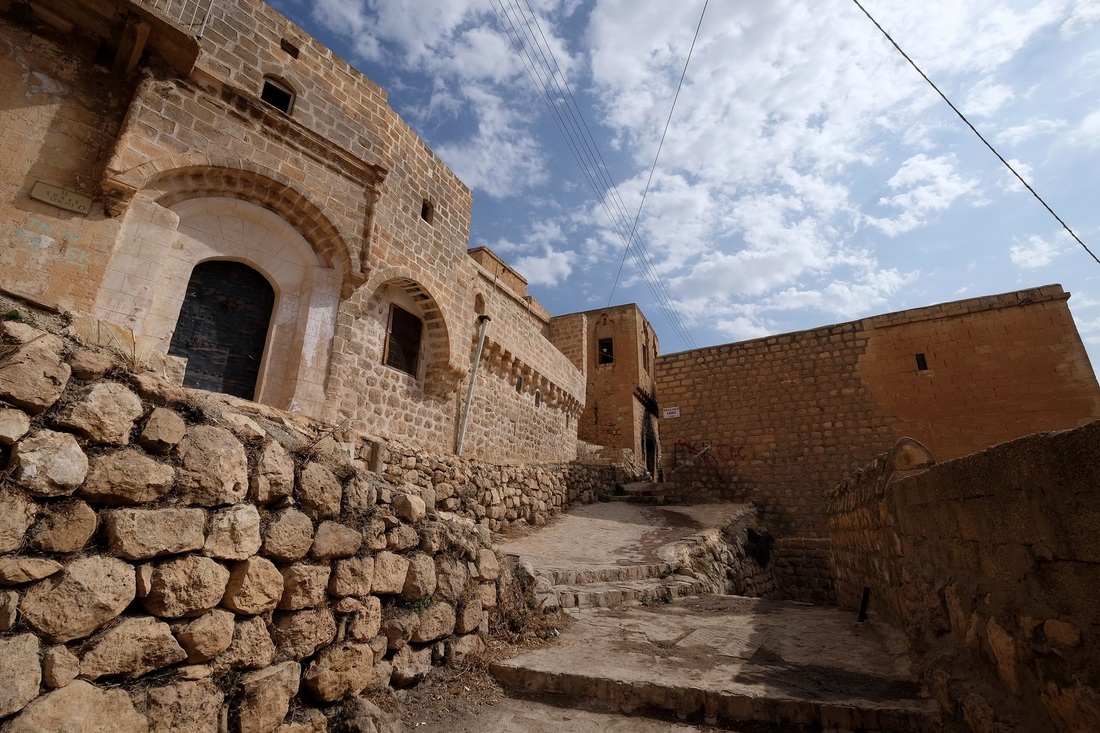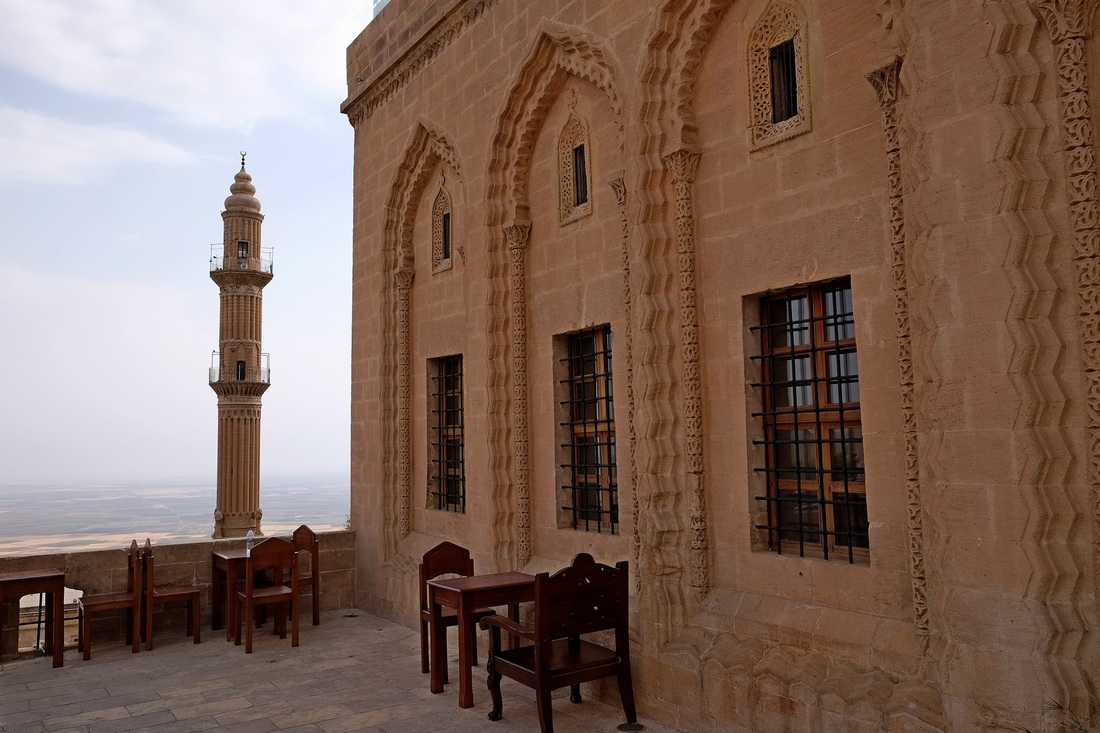This place gives me goosebumps. That's how picture-perfect it is. After speeding through half a dozen characterless concrete cities, discovering Mardin was like stepping into place forgotten by time. This little enclave of serenity has been largely spared by the heavy hand of development and the destructive demands of progress. Here, structures and streets of stone trickle down the mountainside, forming a labyrinth of saffron-coloured passages bursting with architectural delights.
The best way to explore Mardin is to throw out the map and simply allow yourself to get lost. In my own wanderings I came across centuries-old bazaars where leather-aproned men hunch over age-old crafts. In one corner, vibrant braids of string hang off the walls of workshops repairing donkey saddles. On the other end, glistening animal entrails swing gently on large hooks; I shudder slightly at the sight of a butcher inflating lung after lung by blowing directly into the (attached) trachea. Further down, sparks shower the street in front of a knife-sharpening shop. As I walk past, the whirr of its grindstone gives way to the shriek of buzz saws from a shoplot-factory churning out wooden clogs.
The streets here are too cramped for cars, so logistics are still carried out by delivery boys on donkeys (hence the donkey-saddle-repair-shops). They navigate undulating, meandering cobblestone pathways, shuttling goods between houses of stone stacked neatly on parallel terraces cut into the mountainside. I notice that every house has its own place in the sun, so-to-speak. In this community of very polite people, no one builds above his neighbour behind him; and thus no views are blocked and no one lives in another's shadow. This politeness is extended to visitors too, and one can't help but return the kindly nods of mustachioed men as you walk by them and their backgammon boards.
Mardin is a paradise of sorts for photographers. Its narrow, winding streets are flanked by rock walls of varying heights, merged by the occasional archway. A delicate asymmetry of light and shadow results. In criss-crossing the town, you chance upon little plazas bathed in sunlight and soaring minarets piercing the sky-in-between-buildings. The point is you never know what's around the next corner. Small children dart about, and the alleyways echo with their laughter and the clatter of their feet. And if you look up, you'll usually spot a couple of them looking intently at you from their perch on tiny verandas. If you're quick and skilled enough, you can get that elusive "spontaneous shot", which unfortunately eluded me this time.
History-wise, this place is like an open museum. Mardin was a more-or-less a compulsory stop on the Mesopotamian leg of the Silk Road - you can still see functioning caravanserais on the main thoroughfares. The influences of various empires which fought over Mardin for its strategic location live on through the wealth of architecture they left behind. Some are more obvious than others, but you can still see Assyrian and Byzantine churches, Persian-Zoroastrian fire temples (subsequently built-over for other purposes), Turkic mosques and medressas, Arabic stone facades and even Roman irrigation systems in Mardin and its surroundings. The prevailing architecture today is overwhelmingly Islamic - the Arabs had the last laugh here.
Some photos from my walkabouts:
If you sit right here, under this arch, you can see the sun slide down the centuries-old Islamic text carved on the wall.
Side note: I think the white balance on my camera is off on this shot. This looks slightly green to me.
Someone who isn't colour blind please confirm.
Oh, I think I was unbelievably fortunate and caught a shooting star. See right side of the frame, right next to the minaret.
Wondering if I should photoshop out the telecoms tower on the right...





















